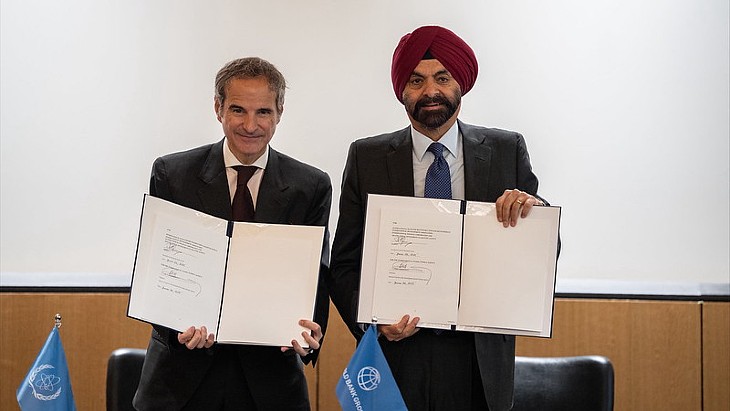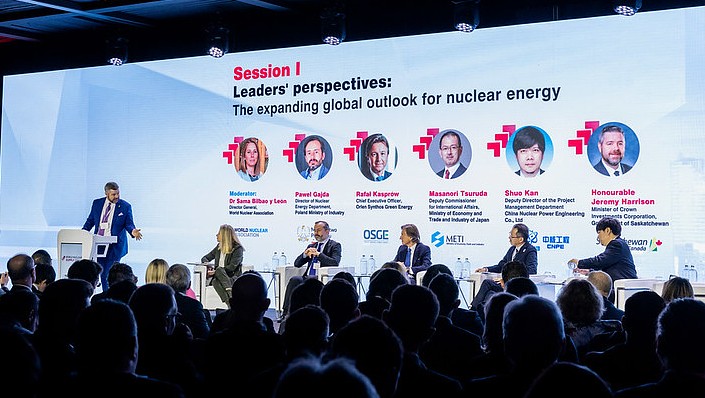Idaho proposed for HALEU fuel fabrication
.jpg)
The high-assay low enriched uranium (HALEU) fuel would be fabricated from blended-down used fuel from the now-decommissioned Experimental Breeder Reactor-II (EBR-II), which operated at the site from 1964 to 1994.
Used high-enriched uranium fuel from EBR-II's operations are currently refined and downblended at INL's Materials and Fuels Complex (MFC) using an electrorefiner. The HALEU thus produced - which contains 5-20% of fissile uranium-235 - is currently stored at INL.
The low-enriched uranium (LEU) fuel used in today's nuclear power plants typically contains less than 5% of fissile uranium-235, but many of the advanced reactor designs currently under development will require HALEU fuel. There are at present no commercial facilities in the US that are immediately capable of producing HALEU.
DOE proposes expanding capabilities at MCF and at the Idaho Nuclear Technology and Engineering Center to convert metallic HALEU into about 10 tonnes of reactor fuel for research and development purposes. This would be used to support near-term research, development and demonstration needs of private-sector developers and government agencies, including advanced reactor developers. Most of the HALEU would come from the processing and treatment of used fuel from EBR-II, as well as other small quantities of the material that are stored at INL.
"There are several US companies pursuing advanced reactor designs that would use fuel enriched with higher levels of uranium-235, and need a source so they can conduct the research and development needed to bring these new technologies to market," DOE Deputy Assistant Secretary for Nuclear Technology Research and Development John Herczeg said. "Being able to provide a source of this fuel would support this research and development and aligns with the Office of Nuclear Energy's mission to advance nuclear power as a resource capable of meeting the nation's energy, environmental and national security needs."
Earlier this year the US Senate approved a proposal for a USD15 million pilot programme to demonstrate to the blending down of used HEU fuel from the USA's naval programme to produce useable HALEU.
EBR-II was a 62.5 MWt demonstration reactor, typically operating at 19 MWe, and was used to demonstrate a complete sodium-cooled breeder reactor power plant with onsite reprocessing of metallic fuel, as well as providing heat and over 2 TWh of power to the Idaho facility during its operating life. It was also used for testing materials and fuels for larger fast reactors and became the basis of the US Integral Fast Reactor, proving the concept of fuel recycling and passive plant safety characteristics. Several small modular reactor designs currently under development reference EBR-II, including Advanced Reactor Concepts's ARC-100 integral fast reactor and GE-Hitachi's PRISM sodium-cooled fast reactor.
A deadline of 30 November is set for public comments on the draft environmental impact statement.
_49098.jpg)
_57190.jpg)
_70526.jpg)
_75453.jpg)







